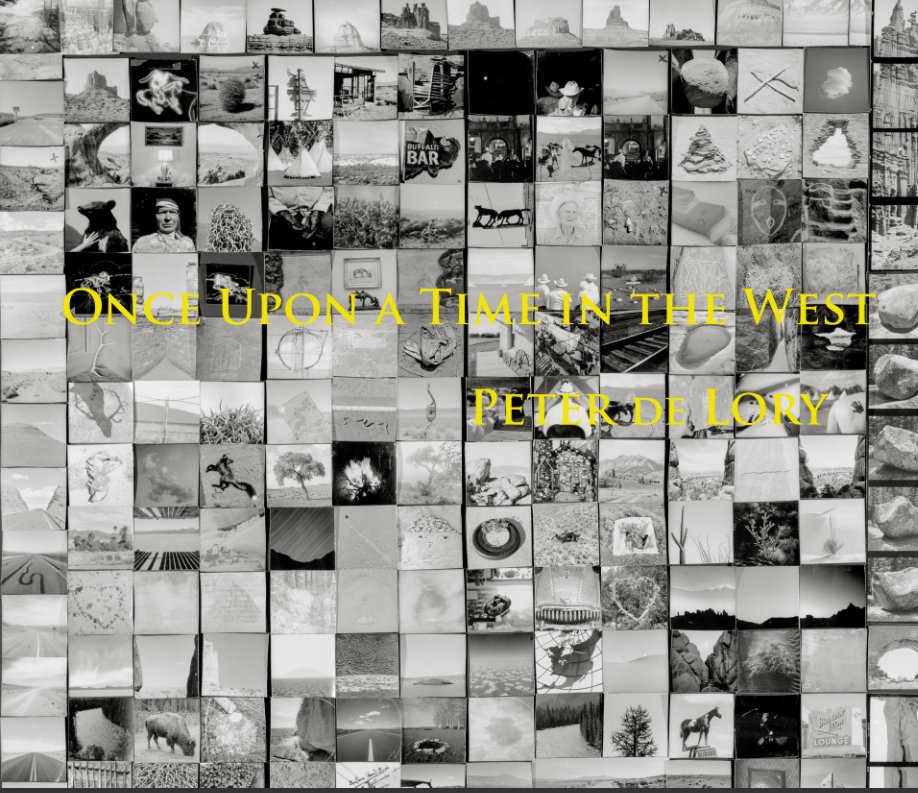Once Upon a Time in the West ***
von Peter de Lory
Dies ist der Preis, den Ihre Kunden sehen. Listenpreis bearbeiten
Über das Buch
Once upon a time in the West
I began making photographs of the landscape in Cape Cod at the age of 16. Growing up on a sparse, thin spit of sand surrounded by ocean anchored my spirit to the land. Driving west to school in San Francisco I was awed by the vastness of the American West. My feelings moving through the landscapes I encountered during this early portion of my career have become the foundation for my work as an artist. Originally my work used the landscape as a focus of dreams.
The western United States became my adopted landscape, and I began working in various ways to express the mythologies of the "American West" and our presence in its physical and social landscape. Every culture passing through the western United States, from the original Native American peoples, to the pioneers, homesteaders, farmers, cowboys, trappers, miners, loggers, and environmentalists who supplanted them, has used the land based on their perception of what the West was created for. Over time these definitions themselves have come to be the way we see the land. The trappers, and now the miners and loggers see a vast natural resource there for the taking. Farmers see a land to irrigate, plow, plant and make fertile, while ranchers look out at a sprawling vacant landscape ready for their grazing herds. The Native American cultures see the earth as ancestor, a place given to exist in, not as a path to be trodden in search of personal gain. The physical evidence remaining of these many assumptions on the western social and physical landscape is what I look for in my exploration. In 1989 I began using the triptych form to link images into implied narrative, recording through visual metaphor our ideological and physical footprint on the land. This format provided a focal point for all my earlier thoughts and sensibilities. In it, narrative and mythology, informed by my studies of western literature and history, came together to address issues facing the modern.
I began making photographs of the landscape in Cape Cod at the age of 16. Growing up on a sparse, thin spit of sand surrounded by ocean anchored my spirit to the land. Driving west to school in San Francisco I was awed by the vastness of the American West. My feelings moving through the landscapes I encountered during this early portion of my career have become the foundation for my work as an artist. Originally my work used the landscape as a focus of dreams.
The western United States became my adopted landscape, and I began working in various ways to express the mythologies of the "American West" and our presence in its physical and social landscape. Every culture passing through the western United States, from the original Native American peoples, to the pioneers, homesteaders, farmers, cowboys, trappers, miners, loggers, and environmentalists who supplanted them, has used the land based on their perception of what the West was created for. Over time these definitions themselves have come to be the way we see the land. The trappers, and now the miners and loggers see a vast natural resource there for the taking. Farmers see a land to irrigate, plow, plant and make fertile, while ranchers look out at a sprawling vacant landscape ready for their grazing herds. The Native American cultures see the earth as ancestor, a place given to exist in, not as a path to be trodden in search of personal gain. The physical evidence remaining of these many assumptions on the western social and physical landscape is what I look for in my exploration. In 1989 I began using the triptych form to link images into implied narrative, recording through visual metaphor our ideological and physical footprint on the land. This format provided a focal point for all my earlier thoughts and sensibilities. In it, narrative and mythology, informed by my studies of western literature and history, came together to address issues facing the modern.
Autorenwebsite
Eigenschaften und Details
- Hauptkategorie: Kunstfotografie
- Weitere Kategorien Kunst & Fotografie
-
Projektoption: Querformat groß, 33×28 cm
Seitenanzahl: 136 - Veröffentlichungsdatum: Juni 03, 2019
- Sprache English
- Schlüsselwörter West, American
Mehr anzeigen


